Plug-in electric vehicles (also known as electric cars or EVs) are connected, fun, and practical. They can reduce emissions and even save you money.

Plug-in electric vehicles (also known as electric cars or EVs) are connected, fun, and practical. They can reduce emissions and even save you money.

What are the benefits?
Fueling with electricity offers some advantages not available in conventional internal combustion engine vehicles.
What are the benefits?
Fueling with electricity offers some advantages not available in conventional internal combustion engine vehicles.
say goodbye to CO2
In 2018, the Energy sector (consisting of Stationary Combustion, Transport and Fugitive Sources) emitted 596 Mega-tonnes (Mt) of greenhouse gases (GHG), or 82% of Canada’s total GHG emissions. The remaining emissions were largely generated by the Agriculture and Industrial sectors (approximately 8% each), with minor contributions from the Waste sector (2%).
Canada’s GHG emissions profile is similar to that of most industrialized countries, in that CO2 is the largest contributor at 80% of total emissions in 2018. The majority of the CO2 emissions in Canada result from the combustion of fossil fuels and transportation’s contribution is as high as 30%.
Locations
Project SPEEDIER has installed EV chargers at the following locations throughout Parry Sound.
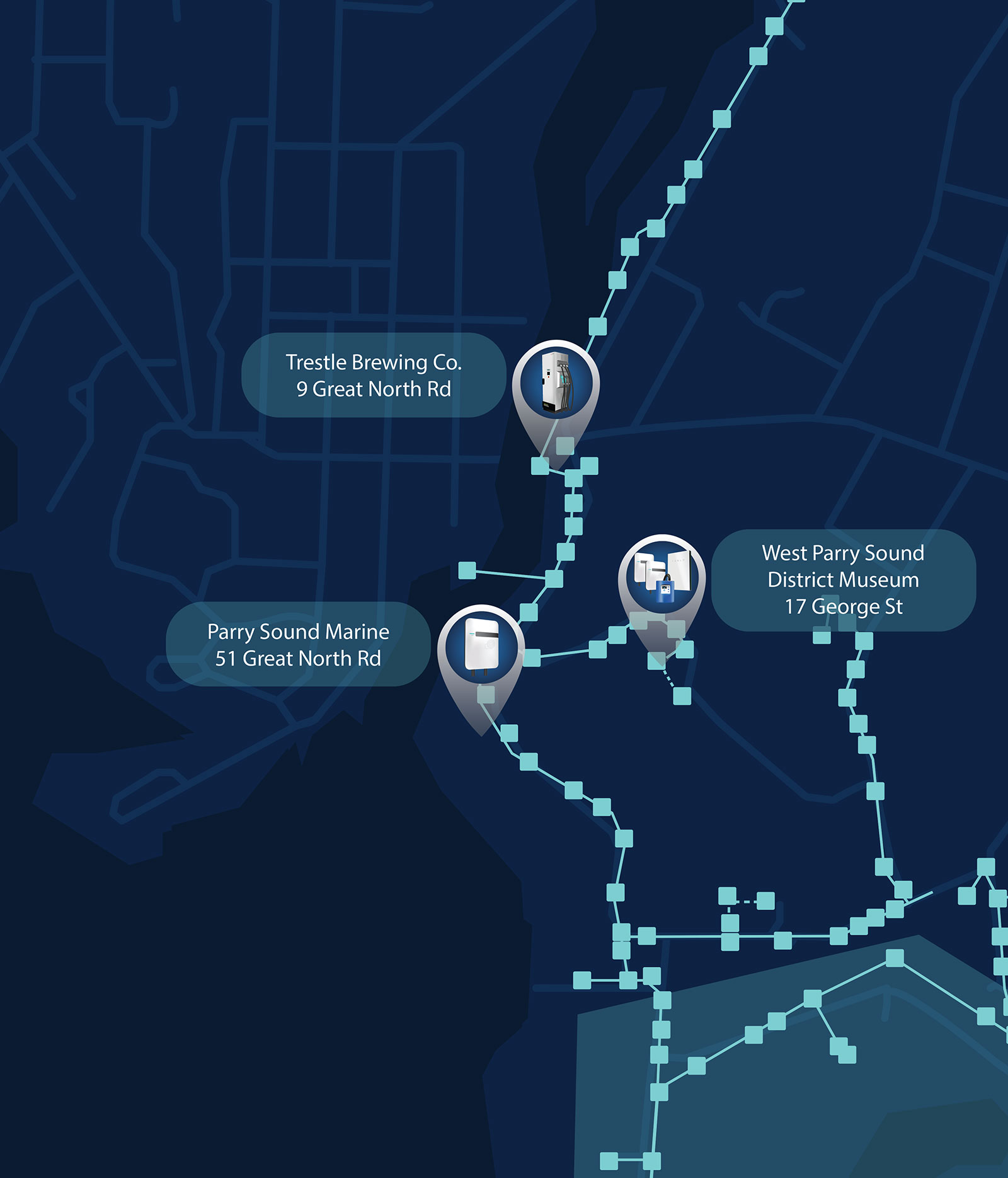
Trestle Brewery
9 Great North Road
Level 3 DC Fast Charger
The West Parry Sound Museum
17 George Street
Two Level 2 Charging Stations
Parry Sound Marine
51 Great North Road
Level 2 Charging Station
What type of connector do I need?
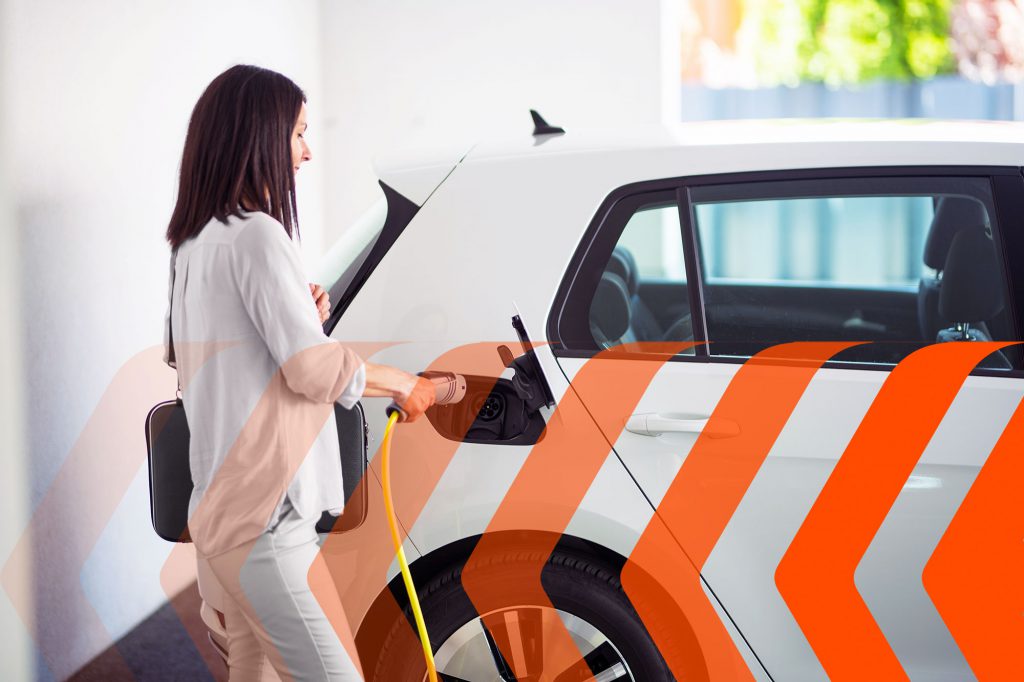
Level I
A Level I charger is simply charging from a standard 120V household outlet, which provides about 6 to 8 km of range per hour of charging. This is sufficient for those who do not drive very far every day, and can leave the car plugged in for long periods between trips.. Plug in hybrids (gas and electric) have smaller battery packs than purely electric vehicles have and may be better candidates for Level I charging. It’s also worth noting that Level I charging is mostly restricted to North, Central & South America, as Europe and much of the rest of the world uses a 220V electric supply for their plug-in electric vehicles.
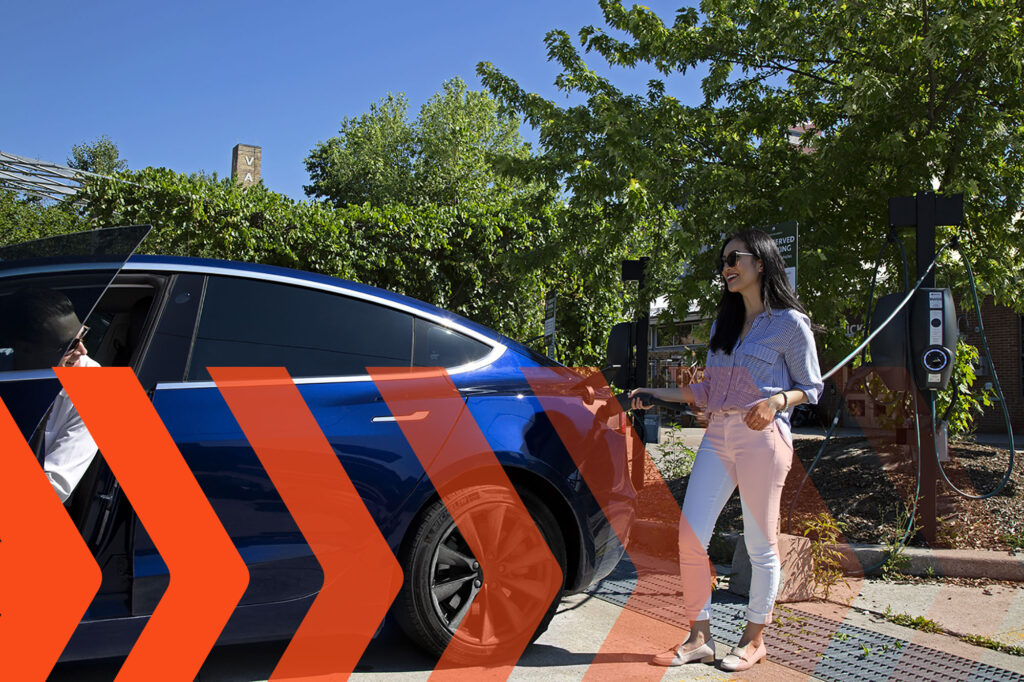
Level II
These Chargers are approximately 200 volts, and will charge a typical EV at a rate between 20 to 100 km of range per hour of charging, depending on how much power the charger can supply, and how much power the EV can accept. In the US and Canada, most homes use 240 volts only for appliances like dryers, which means homes may need re-wiring to install this charger. Most commercial properties use 208V, or three phase power, and this may also need to be adapted for the Level II charger.
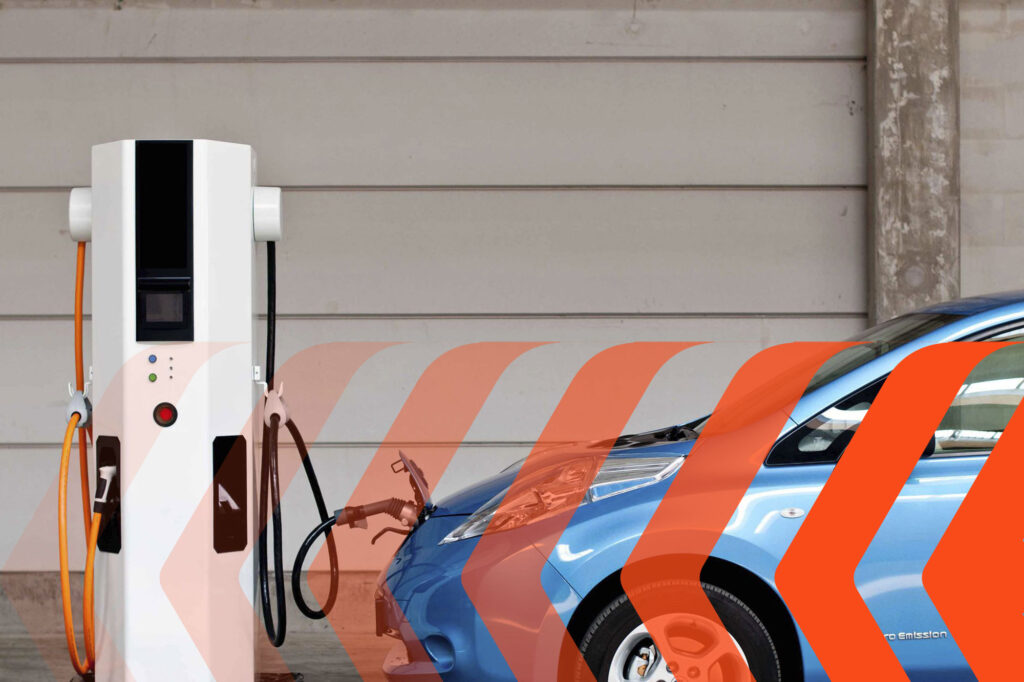
Level III
DC charging is available in a much higher voltage and can charge some plug-in electric vehicles with as high as 800 volts. This allows for very rapid charging. However, a single DC fast charger can cost as much as $50,000 to purchase and install, and this cost, as well as the fact that the current needed to use them isn’t always readily available, is why they aren’t used in residential installations. They are common for public chargers, and some EV plug-in vehicles can charge to 80 percent in a charge time of only 20-30 minutes.
SPEEDIER is working with SWTCH for EV management and recording of data, streamlining the charging experience for drivers while optimizing usage and revenue for building owners.
What is SWTCH?
SWTCH provides turnkey solutions for electric vehicle (EV) charging and energy management. The smart EV charging platform streamlines the charging experience for drivers while optimizing usage and revenue for building owners. The technology is based on open communication standards to ensure scalable, future-proof solutions. Ultimately, the mission at SWTCH is to improve EV charging accessibility in urban settings and ensure effective integration of EVs in our clean energy future.
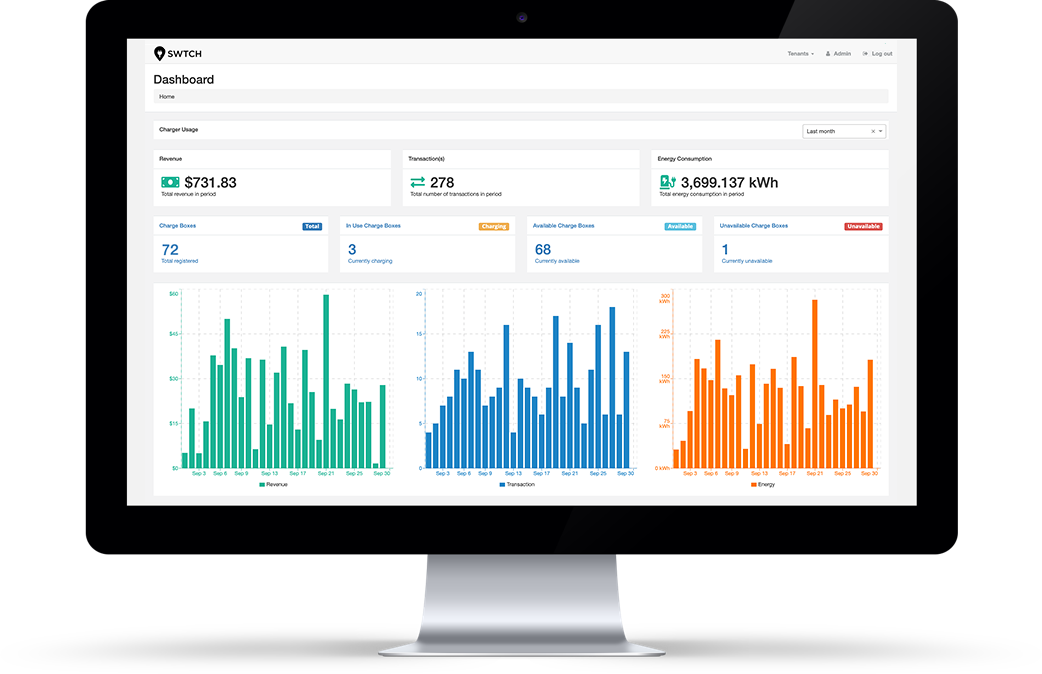
By recording the amount of energy used at the stations our analysis team can estimate the reduction in GHG emission over traditional vehicle emissions. This data can be very valuable in developing future projects like SPEEDIER that help Parry Sound reach the goal of being net zero, and building a cleaner future.
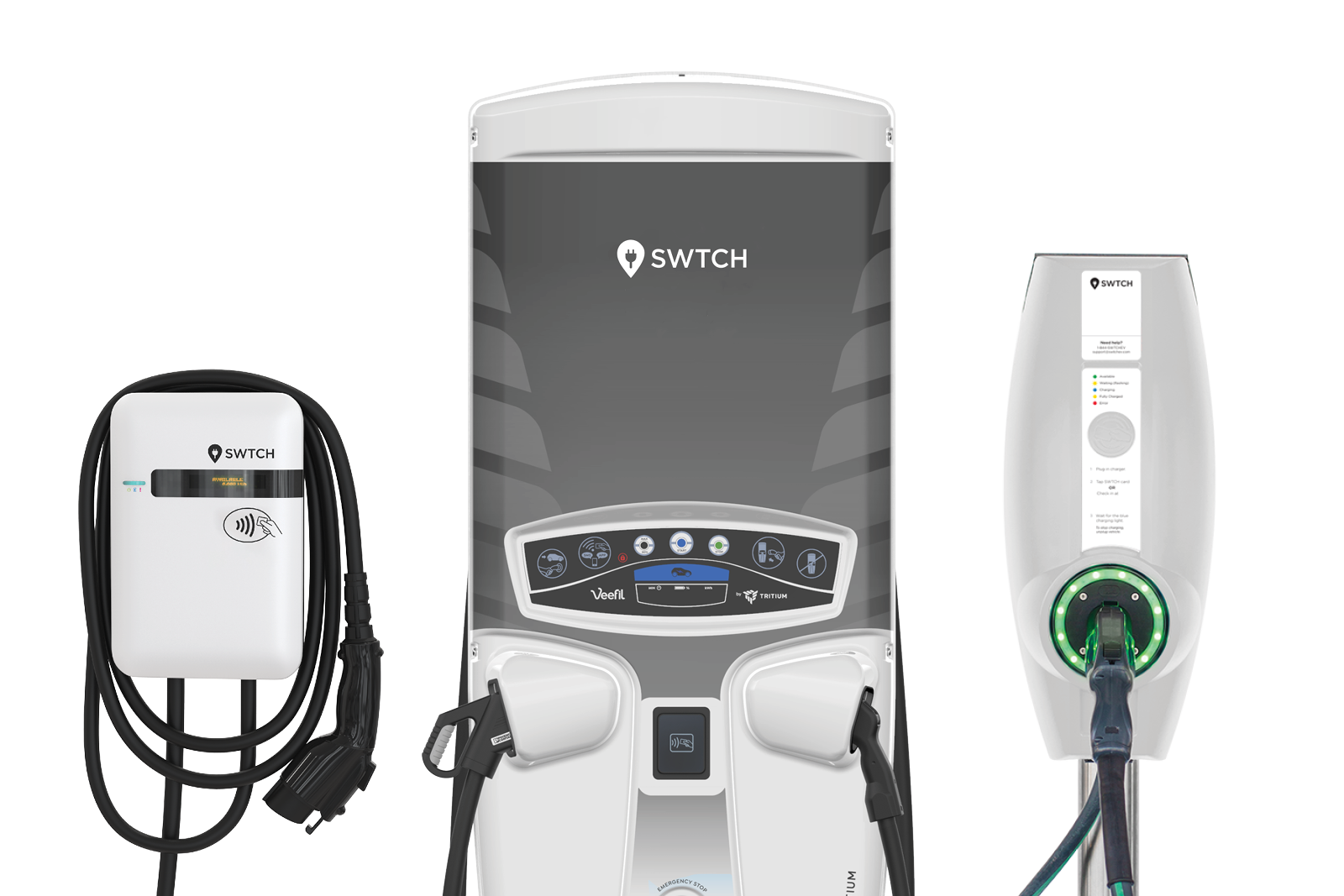
SWTCH provides easy access for EV owners and simple management for charger owners including:
• Charger access control
• Automatic billing & payments
• Usage reporting & analytics
• Loitering enforcement
• Customer & technical support
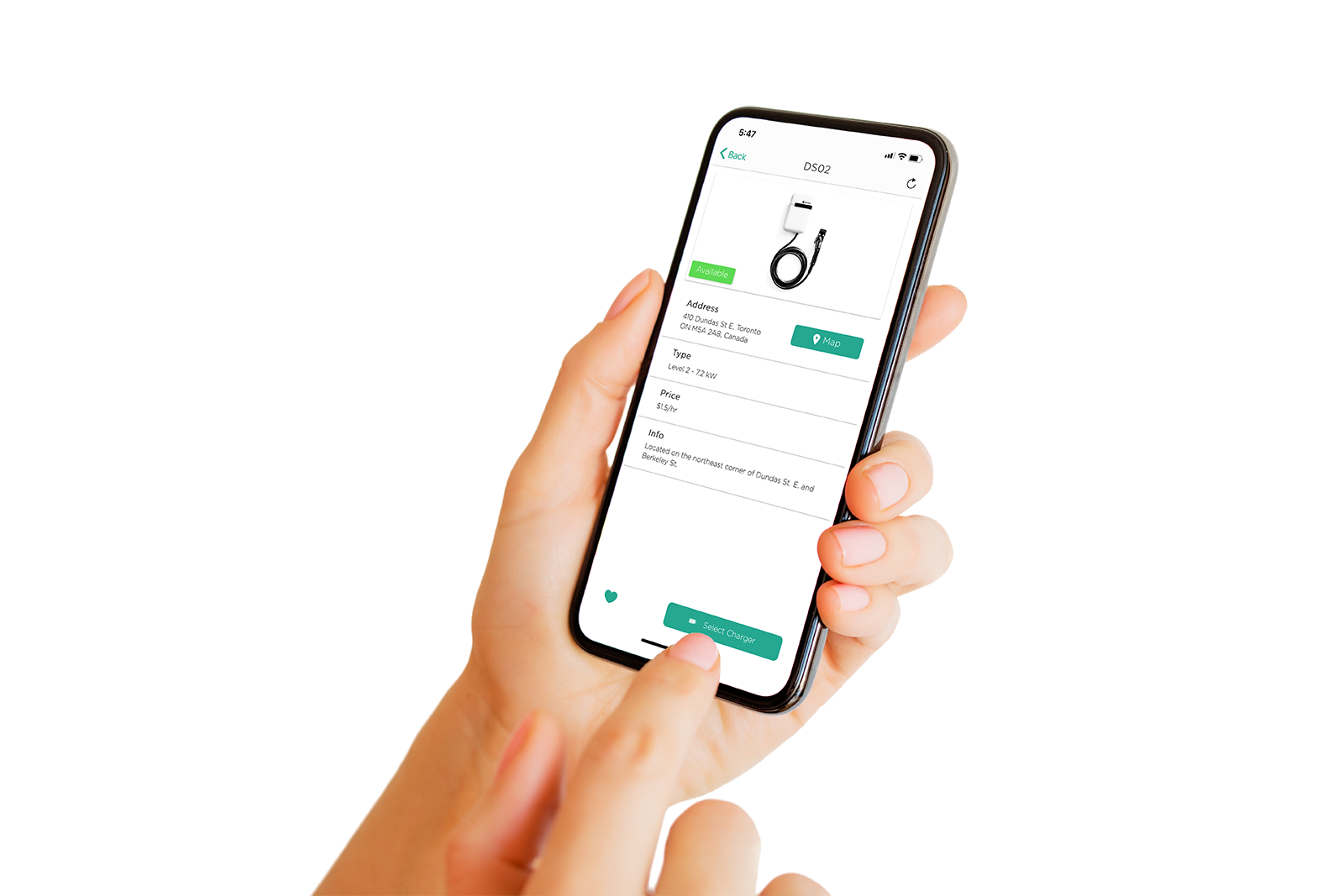

SPEEDIER is working with SWTCH for EV management and recording of data, streamlining the charging experience for drivers while optimizing usage and revenue for building owners.
What is SWTCH?
By recording the amount of energy used at the stations our analysis team can estimate the reduction in GHG emission over traditional vehicle emissions. This data can be very valuable in developing future projects like SPEEDIER that help Parry Sound reach the goal of being net zero, and building a cleaner future.

SWTCH provides Easy access for EV owners and simple management for charger owners including:
• Charger access control
• Automatic billing & payments
• Usage reporting & analytics
• Loitering enforcement
• Customer & technical support
By recording the amount of energy used at the stations our analysis team can estimate the reduction in GHG emission over traditional vehicle emissions. This data can be very valuable in developing future projects like SPEEDIER that help Parry Sound reach the goal of being net zero, and building a cleaner future.

How to use the Level 2 EV Charger
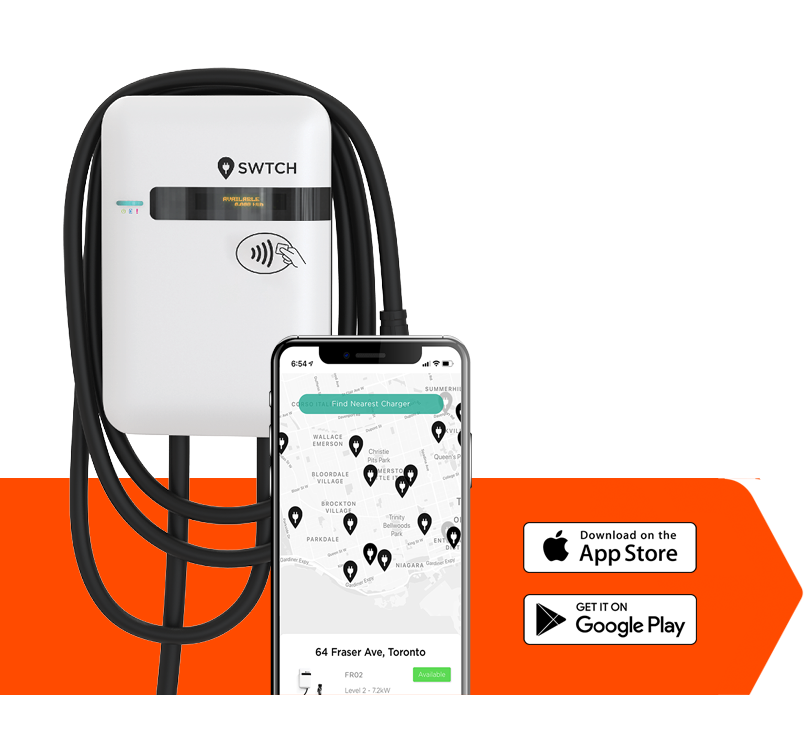
- Download the SWTCH mobile app.
- Create an account and verify your email.
- Follow the on-screen instructions.
Use code SPEED1
FAQ’s
I know it is free, but isn’t somebody paying for it at the end of the day?
This charger is part of an innovative project called SPEEDIER.
How does it work?
After following the instructions to download the SWTCH opp, enter the charger ID (e.g., LKOl) into the search bar, and follow the on-screen instructions, you will have a fast secured and proven charging process. The battery charging status is displayed and the charging cycle finishes by itself or can be terminated by user command.
Can vehicles be charged when it is raining or snowing?
Absolutely. It is safe to charge in typical weather conditions. That is because electric vehicles are purposefully engineered to withstand rain and water intrusion, not to mention dust particles that could wreak havoc on an electric system.
How long does it take to charge my car?
It depends on the size of battery, state of battery (empty vs. full), maximum charging rate of the vehicle, maximum charging rate of the charger and environmental factors. The Lite-on Platinum has 6.6-7.6 kWh of power can fill batteries significantly faster that level 1 chargers.
An hour of charging can provide ranges of up to 45km for a typical EV.
Can it charge all types of electric cars?
Yes, with adapters. By default, the Lite-on Platinum comes with the 1772 connector, which is the most common type. Electric car brands in North America use the same standard plugs or will come with a suitable adapter. Charging with other connector types can be done with the proper adaptors.


